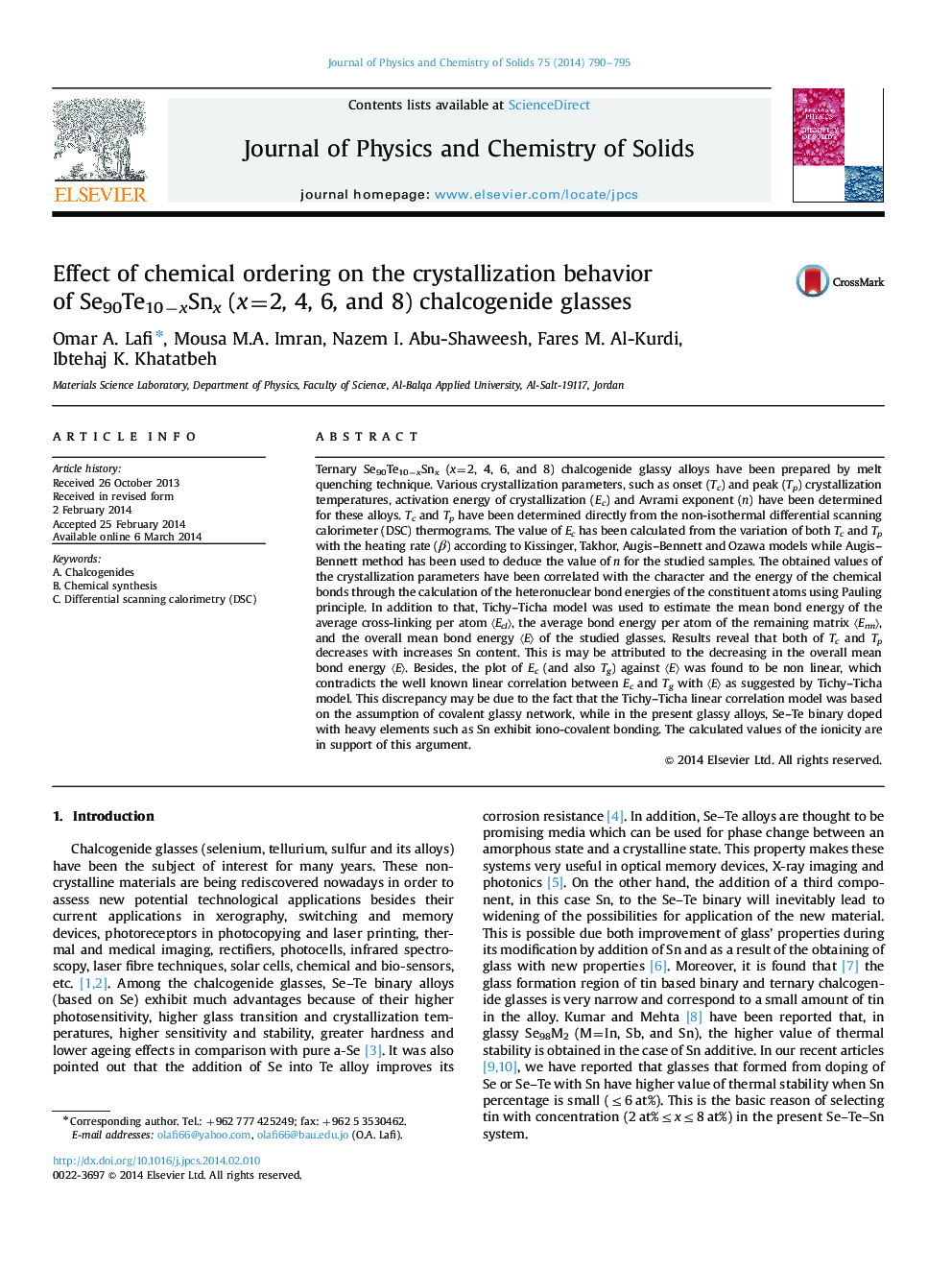| Article ID | Journal | Published Year | Pages | File Type |
|---|---|---|---|---|
| 1516045 | Journal of Physics and Chemistry of Solids | 2014 | 6 Pages |
Abstract
Ternary Se90Te10âxSnx (x=2, 4, 6, and 8) chalcogenide glassy alloys have been prepared by melt quenching technique. Various crystallization parameters, such as onset (Tc) and peak (Tp) crystallization temperatures, activation energy of crystallization (Ec) and Avrami exponent (n) have been determined for these alloys. Tc and Tp have been determined directly from the non-isothermal differential scanning calorimeter (DSC) thermograms. The value of Ec has been calculated from the variation of both Tc and Tp with the heating rate (β) according to Kissinger, Takhor, Augis-Bennett and Ozawa models while Augis-Bennett method has been used to deduce the value of n for the studied samples. The obtained values of the crystallization parameters have been correlated with the character and the energy of the chemical bonds through the calculation of the heteronuclear bond energies of the constituent atoms using Pauling principle. In addition to that, Tichy-Ticha model was used to estimate the mean bond energy of the average cross-linking per atom ãEclã, the average bond energy per atom of the remaining matrix ãErmã, and the overall mean bond energy ãEã of the studied glasses. Results reveal that both of Tc and Tp decreases with increases Sn content. This is may be attributed to the decreasing in the overall mean bond energy ãEã. Besides, the plot of Ec (and also Tg) against ãEã was found to be non linear, which contradicts the well known linear correlation between Ec and Tg with ãEã as suggested by Tichy-Ticha model. This discrepancy may be due to the fact that the Tichy-Ticha linear correlation model was based on the assumption of covalent glassy network, while in the present glassy alloys, Se-Te binary doped with heavy elements such as Sn exhibit iono-covalent bonding. The calculated values of the ionicity are in support of this argument.
Related Topics
Physical Sciences and Engineering
Materials Science
Electronic, Optical and Magnetic Materials
Authors
Omar A. Lafi, Mousa M.A. Imran, Nazem I. Abu-Shaweesh, Fares M. Al-Kurdi, Ibtehaj K. Khatatbeh,
